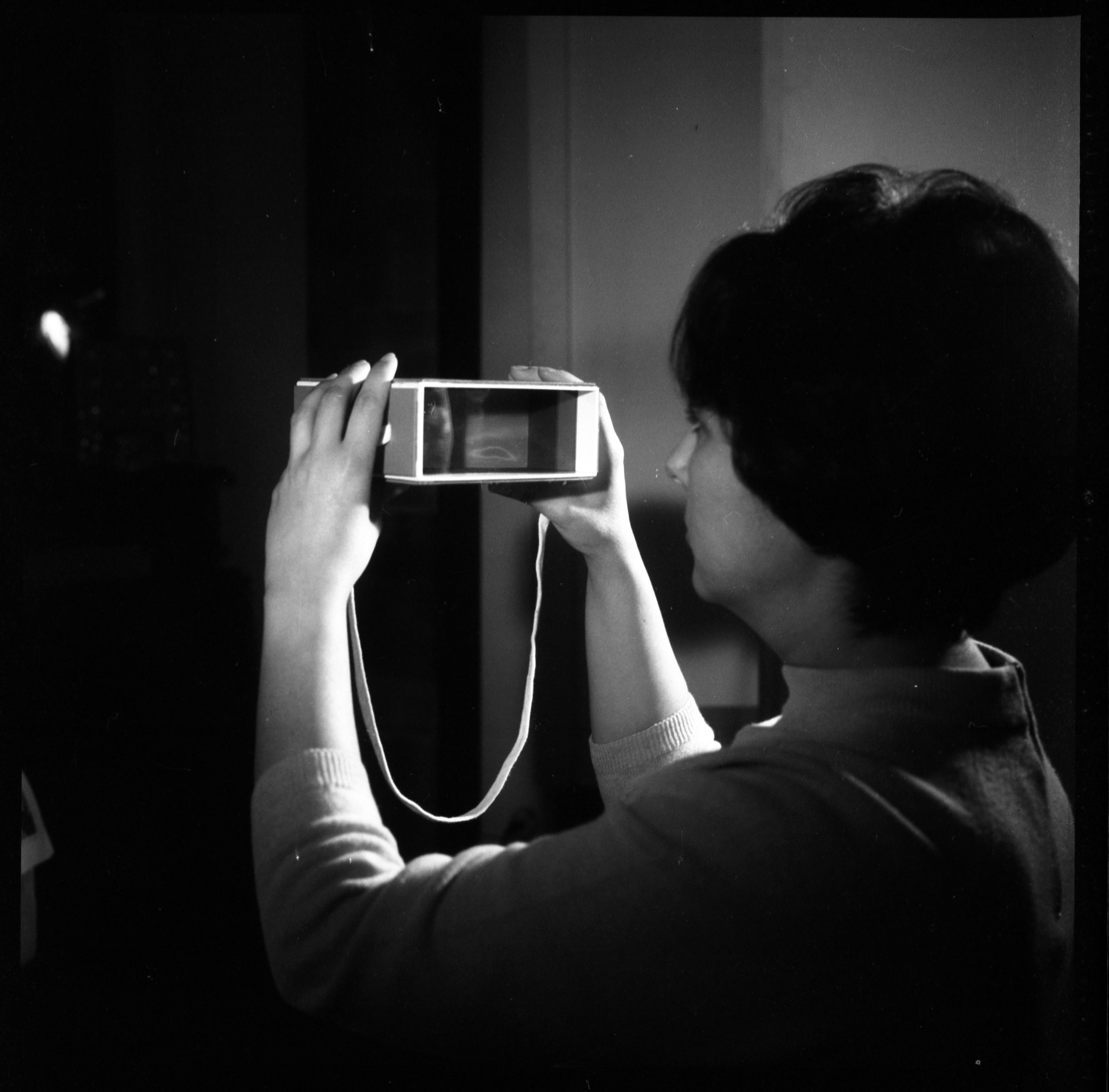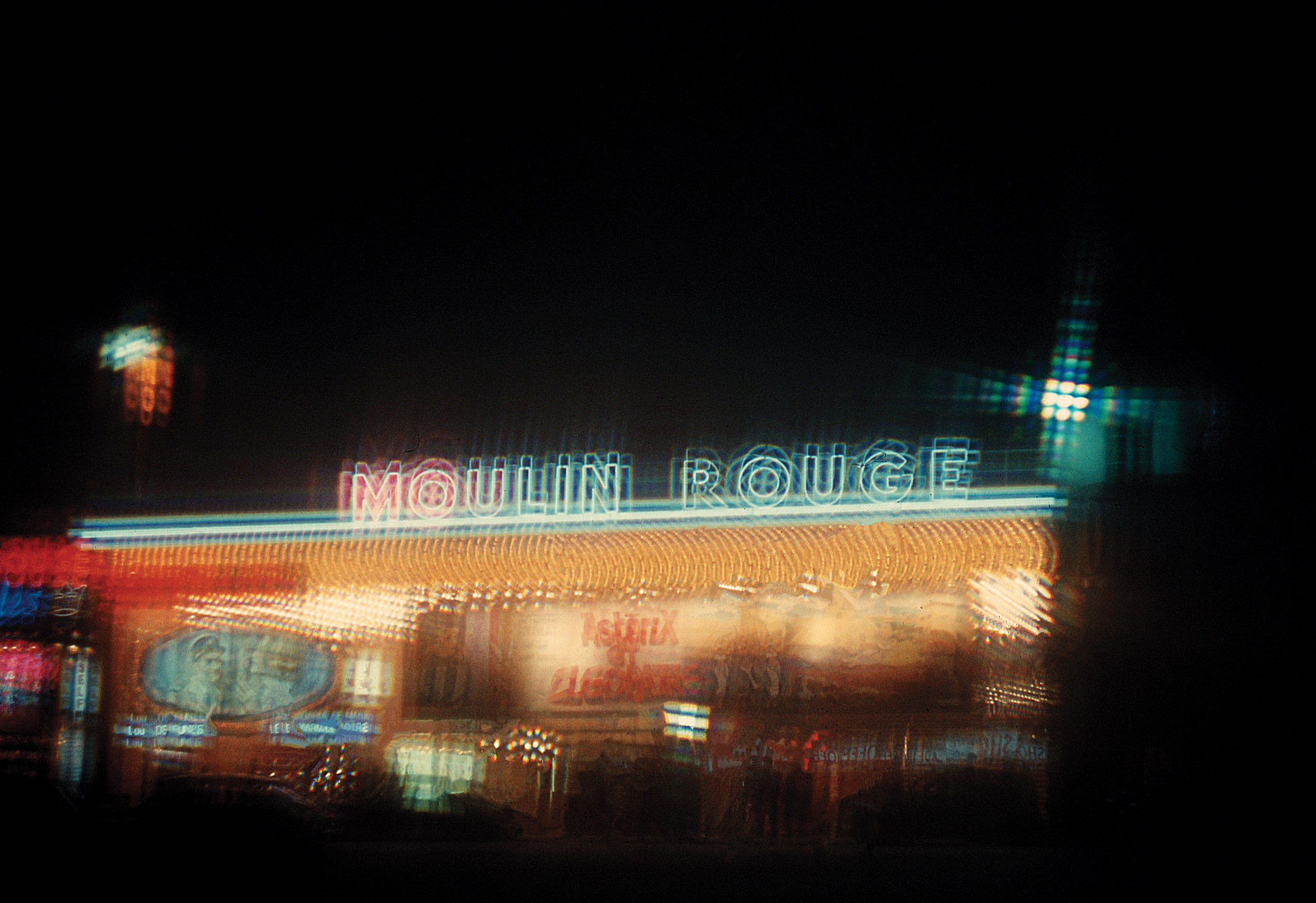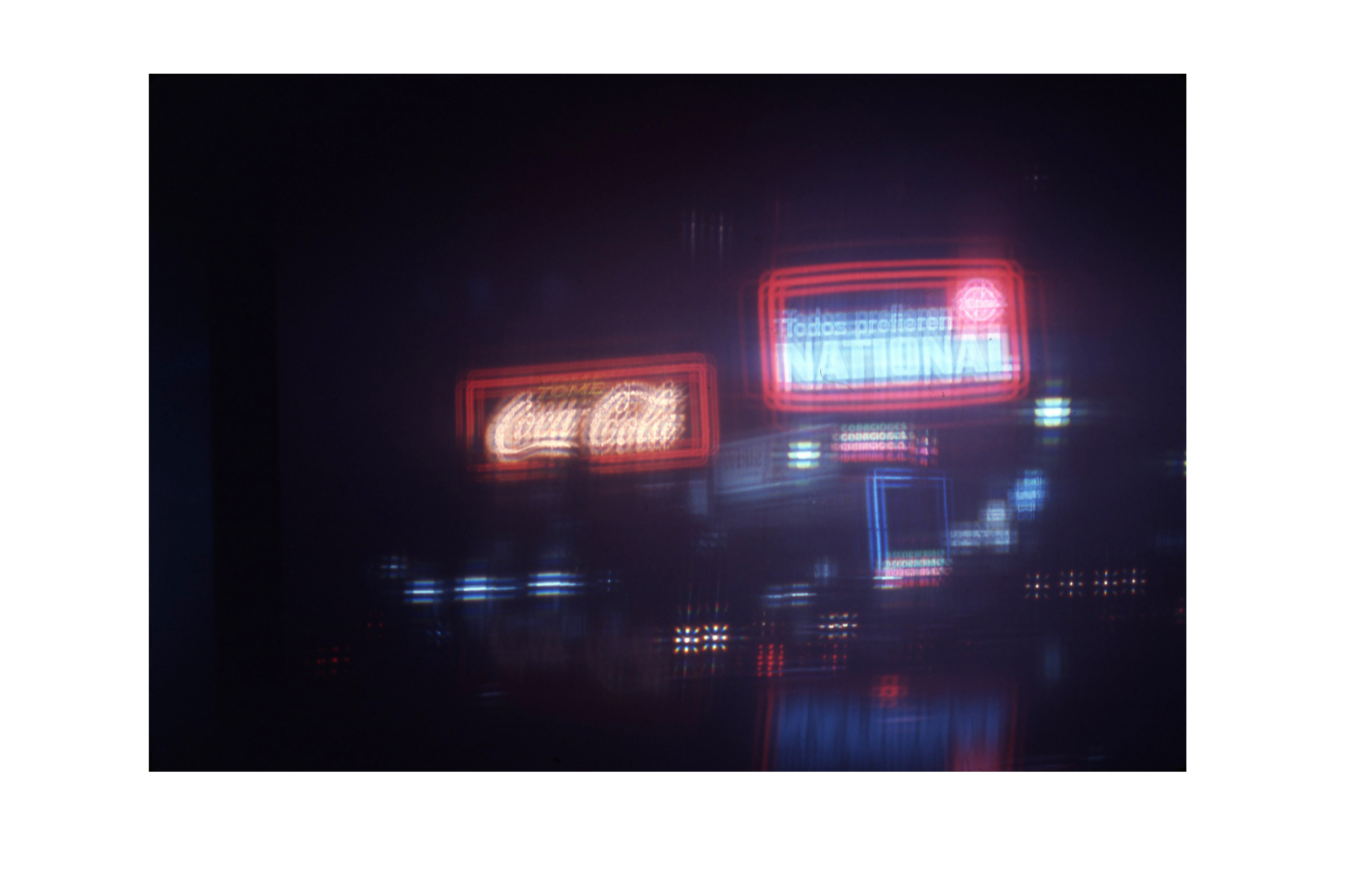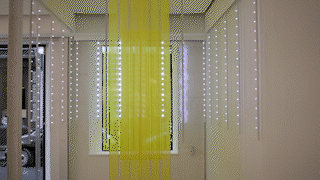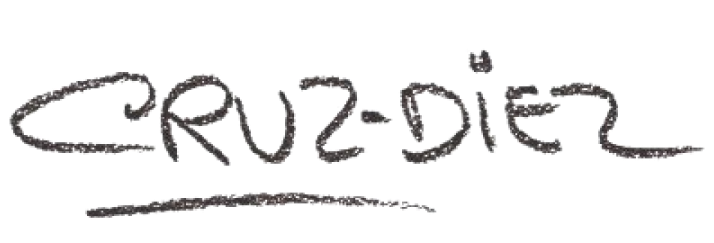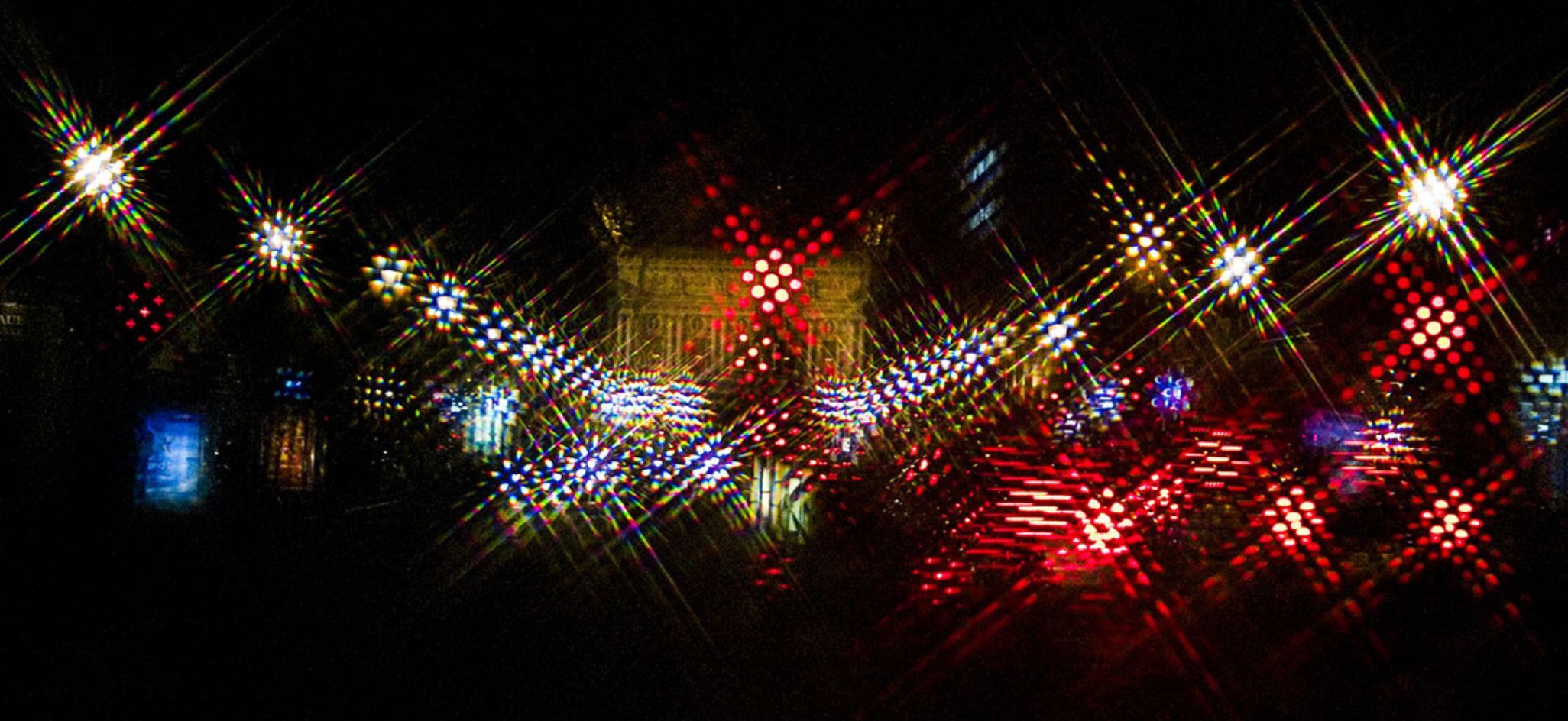
The Chromoscope (1967) is an instrument for us to carry, as we would carry a spyglass. It is an instrument intended to operate the transfiguration of the nocturnal landscape of large cities. Its attraction does not reside on the object itself but on the visual event that it generates. It is a piece that acts as an intermediary between reality and our eye, conditioning our sight to a new perception of our surroundings.
It is an artwork-intermediary, a filter which interposes itself between reality and our eye, which conditions our glance for a new reading of the environment. The Chromoscope can be multiplied infinitely, it generates an infinite number of living situations as many as there are possible landscapes in the night life, Through the chromoscope, all the luminous points are decomposed according to the colors of the spectrum. The forms are pulverized.
Jean Clay – Carlos Cruz-Diez et les trois étapes de la couleur moderne, Jean Clay, 1969
